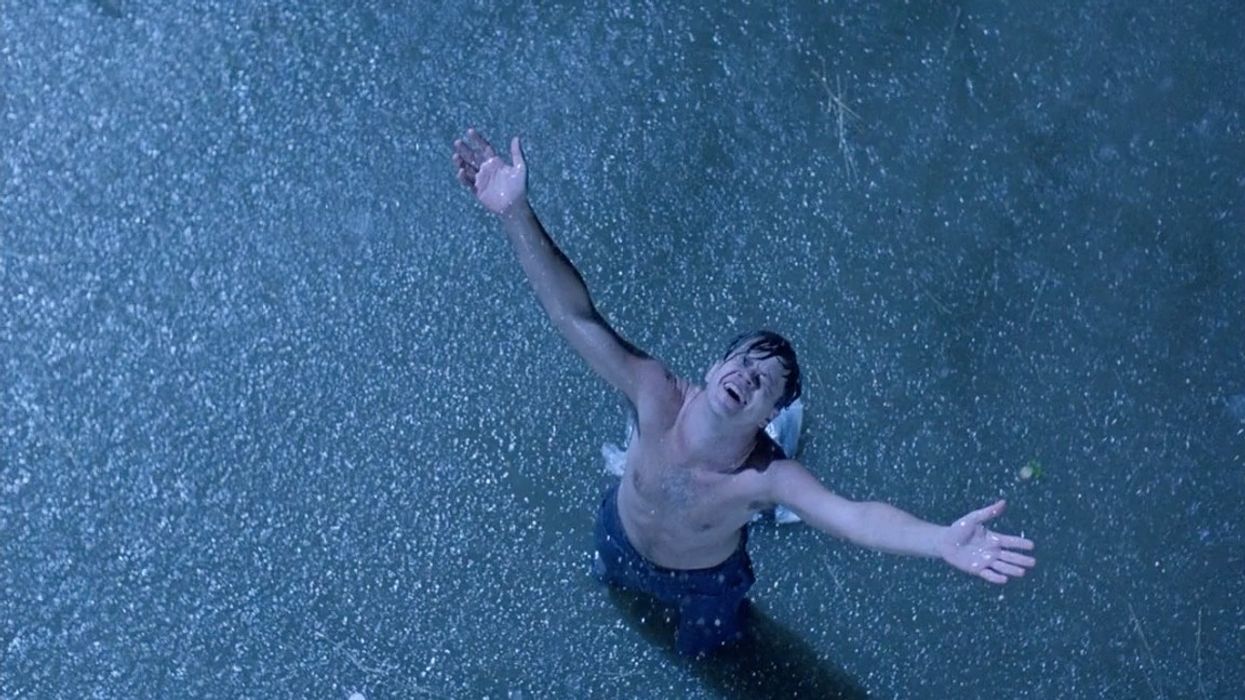What is Catharsis in Film and TV?
Sometimes, you need a moment of rest after an important story beat happens.

Shawshank Redemption
You know when you're watching a TV show or a movie, and you feel like you've just changed as a person or even gone through all the emotions at the hand? Afterward, you need a bit of a rest.
And we call that experience 'catharsis'. It can happen to you watching it, and it can happen to the characters on screen, as they take a moment after an emotional beat in the story.
But how can you use it in your own writing?
Let's dive in.
What is Catharsis?
Catharsis is a Greek word meaning "purification" or "cleansing" – is a powerful emotional experience felt by audiences when witnessing a story unfold. The concept dates back to ancient Greece and Aristotle's analysis of tragedy in his work Poetics.
In films and television, it's a profound release of pent-up feelings that can bring audiences a sense of transformation and even inner healing.
How Does Catharsis Work?

Breaking Bad
AMC
Compelling stories create a deep connection between the audience and the characters onscreen.
As we witness fictional struggles, achievements, losses, or moments of profound change, we begin to see reflections of our own lives within these narratives.
This powerful mirroring offers not just an escape but the possibility of facing our own emotions and experiences within a safe, fictional context.
Cathartic moments in screenwriting often occur at the resolution of a character's journey.
Examples of Catharsis in Film and TV

Dead Poets Society
Touchstone
Catharsis happens all the time in movies and TV shows. I wanted to pick some epic moments that showed why we needed to slow down for a beat, but also ensured those slow beats were never boring.
Check them out.
- The Shawshank Redemption: Andy Dufresne's triumphant escape from prison and his reunion with his friend Red on the shores of Zihuatanejo provide an immensely cathartic moment of hope after witnessing years of wrongful imprisonment.
- Good Will Hunting: When Will finally allows himself to be vulnerable and confronts the painful experiences of his past, we as the audience share in the release of his emotional burdens, leading to a sense of hope for his healing.
- Dead Poets Society: While the film concludes tragically, the scene where the students stand upon their desks in defiance remains an iconic moment of cathartic rebellion and a tribute to their beloved teacher.
- Breaking Bad: Walter White's final moments, although morally complex, provide a sense of resolution and a release of the destructive path he had forged, allowing for a complicated but cathartic understanding of a deeply flawed character.
- Fleabag: The raw and honest portrayal of Fleabag's grief-stricken journey resonates deeply with viewers. As she gradually begins to heal, process trauma, and forge healthier relationships, we're granted a space to confront our own emotional complexities.
How to Achieve Catharsis in Screenwriting
 'Fleabag'CREDIT: Prime Video
'Fleabag'CREDIT: Prime VideoRemember, catharsis is an art, not a formula. True emotional resonance comes from an authentic connection to your characters' journeys and your own understanding of the human experience.
The more of 'you' that you put into the story, the more I think it will be a cathartic experience for the audience.
The power of catharsis in screenwriting lies in its ability to mirror back the complexities of the human emotional landscape.
By giving us fictional spaces to grapple with our hopes, fears, triumphs, and losses, stories offer a profound opportunity for reflection, release, and even a sense of transformation.
Now, go get writing!
- How This Filmmaker Made a Short Film with Practical Fire and a Rising Star ›
- How to Write Your Script's Climax ›
- How David Lynch Uses Subversion to Elicit Catharsis in 'Mulholland Drive' ›











